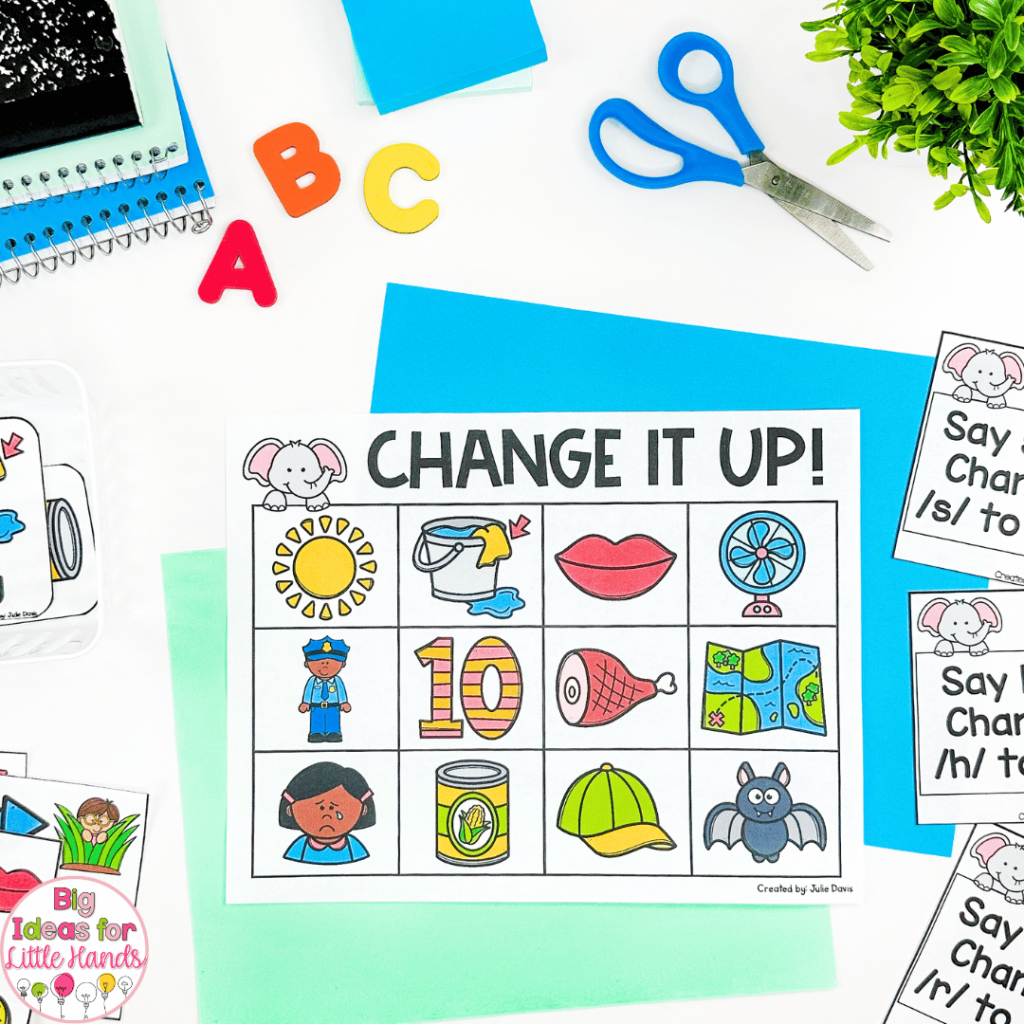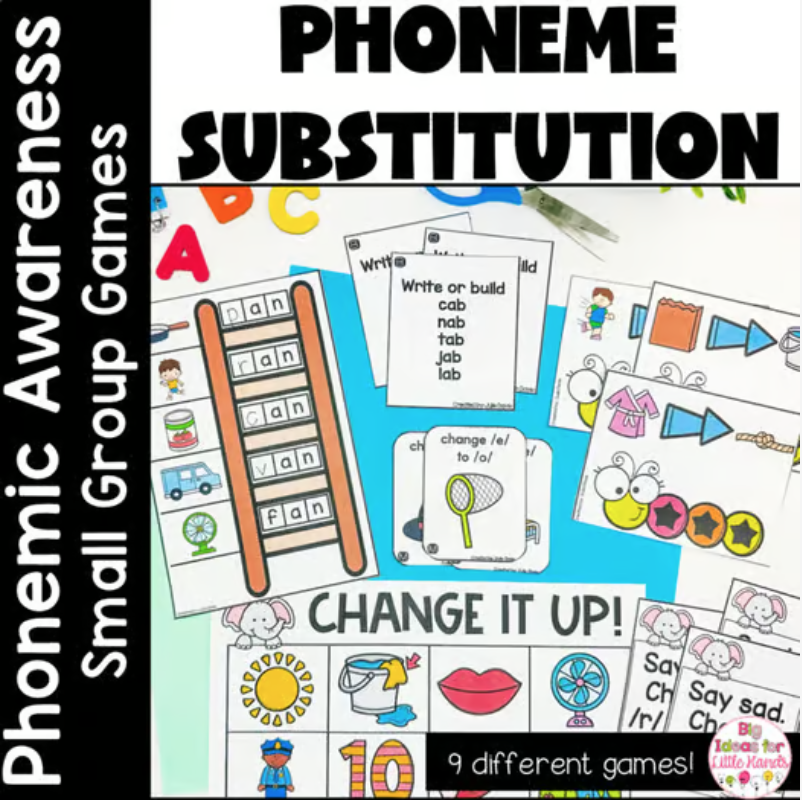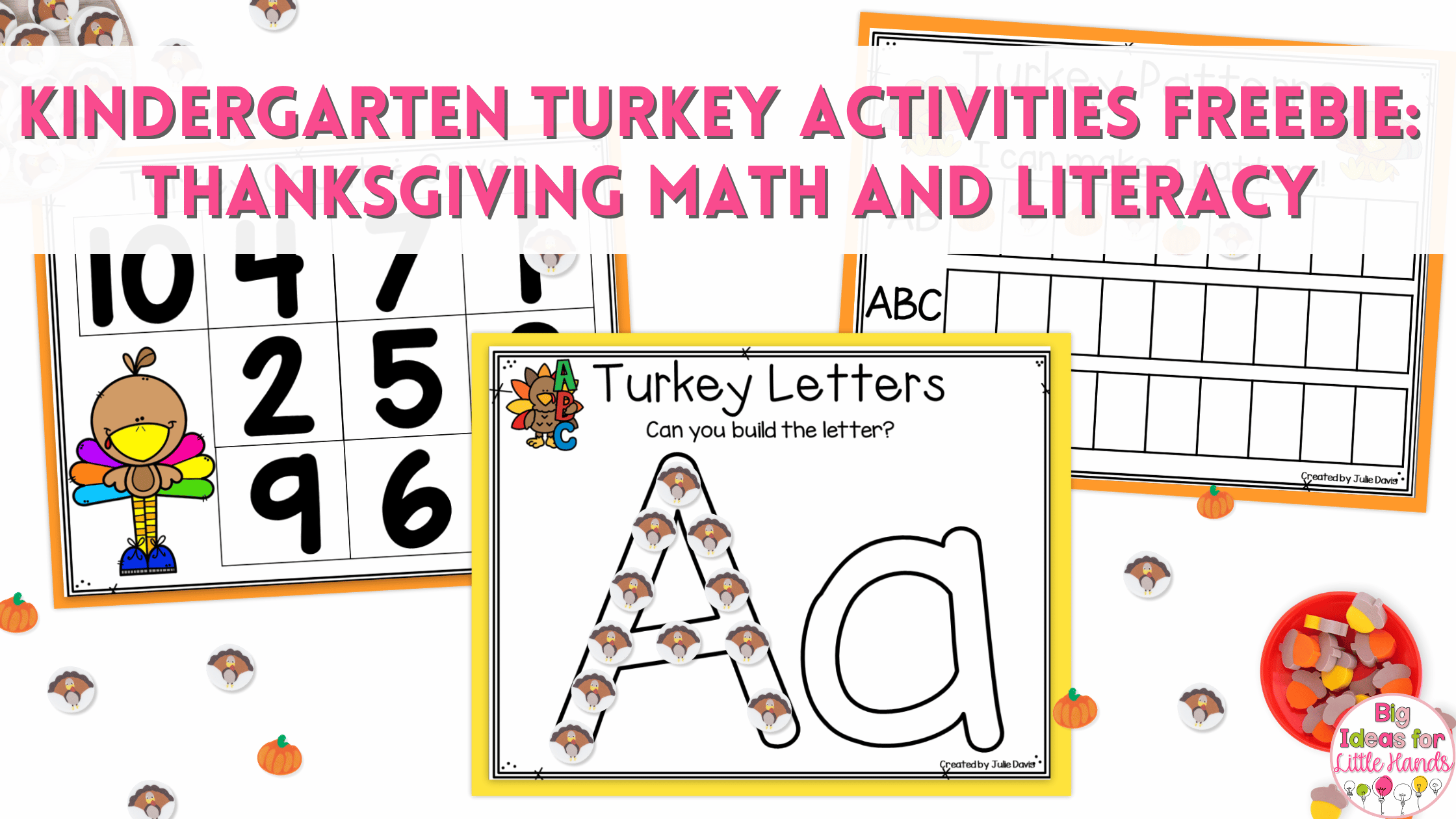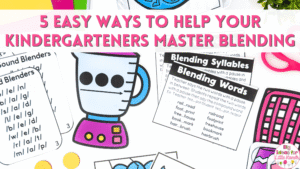Learning to read is not just a one-and-done type of activity. There are many skills students must learn and put together to become fluent readers. Many of these skills fall under the umbrella of phonemic awareness. And, for many kids, one of the most difficult…is phoneme manipulation. Over the years, I have tried many things when teaching my students how to manipulate phonemes. Some worked, and some, well, let’s just say they were less than successful. Today, I’m sharing my best tips and activities to help you teach phoneme manipulation to your students.

What is Phoneme Manipulation?
Phoneme manipulation is the ability to change one sound in a word to create a new word. It is a difficult skill for students because it requires more mental flexibility than just recall. However, don’t let that keep you from introducing it to students. We see a dramatic improvement in students’ reading fluency and spelling skills when this skill is mastered.
When phoneme manipulation is fully understood, students no longer rely on sounding out each sound and blending words as they read. They are able to identify common sounds and letter combinations and blend fewer sounds to read words. This greatly improves their reading fluency and comprehension. When spelling and writing, students are able to tap into words and spelling patterns they have learned to write new words. In both instances, they are developing stronger critical thinking and problem-solving skills, too!
When to Teach Phoneme Manipulation
Before students can work on phoneme manipulation, there are a few key skills they must know. First, students must have a solid understanding of letter-sound correspondence. They need to be able to hear a sound and know which letter it is, and vice versa.
Additionally, students need to be able to blend and segment sounds. They will use both of these skills as they manipulate phonemes to make new words.
Once students have a solid foundation with all three of these skills, you are ready to introduce phoneme manipulation to your students.
Activities for Teaching Phoneme Manipulation
Now that we know how important it is for students to be able to fluently manipulate the sounds in words, let’s dive right into my favorite activities for teaching and practicing this skill. Along the way, I’ll also share why these activities work and some tips on using the activities successfully.
These three activities are my go-to activities for teaching this skill and moving students from one level to the next. I use them in this order, and each one builds on the skills students learned in the previous activity.
1. Word Ladders
I have had the best results teaching students how to manipulate phonemes by connecting what students hear with what they can see, and word ladders are a great way to do that. Ultimately, we want students to be able to change out phonemes with automaticity, but supporting them visually and auditorily at the beginning really helps them understand the concept.
In a word ladder, students start with an image and a word on the bottom rung of the ladder. Their goal is to climb the ladder, changing one phoneme at a time to create new words. For young readers, providing word ladders with visual support helps them know which word should come next as they work their way up the ladder.
I love to begin teaching phoneme manipulation by using word ladders in our mini-lesson. This allows me to teach students the concept of phoneme manipulation and how we can change one sound to create a new word. The game-like feel of word ladders often has my students begging for more. It doesn’t take but 60 seconds or so to add a word ladder into your morning meeting time or as a phonics warm-up. By doing just one a day as a class, you will see your students’ phoneme manipulation skills improve drastically.
But why stop there? I also love to use word ladders in my small group instruction. Word ladders naturally provide multiple repetitions of practice. By using them with our target phonics skill, I can give students lots of practice quickly and easily.
In my classroom, word ladders also make their way into our literacy centers. By this time, the students are very familiar with word ladders and know just what to do. This center focuses on a skill that the entire class is ready to practice and review.
2. Which Sound Changed?
Once students understand the concept of phoneme manipulation, it’s time to up their skills and have them identify which sound in the word changed. I like to do this by playing a game I call “Which Sound Changed?” The goal of this game is for students to develop their phonological awareness skills to the point that they can identify whether the beginning, middle, or ending sound of a word has changed.
I like to introduce this game in a small group setting so that I can make sure that each student really understands the concept. To begin, I show students a card with two pictures on it. We begin by saying the word for each item. Next, I have students segment the first word and write down the sounds they hear. Then, we do the same thing for the second word, writing the sounds underneath the first. Then we compare the two words to find the sounds that are different.
We continue playing this way until students have a really solid understanding of the skill. Then we move up a level and begin playing without writing anything down. As we move into a completely auditory game, students move one step closer to using this skill like they will when reading.
I like to give each student a card that shows two pictures. Students will say the two words, decide which sound is different, and then mark it on the caterpillar on the card. Students can use small blocks, manipulatives, or clothespins to mark their answer.
3. Super Sound Swap
By now, your students should be developing solid phoneme manipulation skills. When they can change out the beginning, middle, or ending sounds to create a new word, they are ready for the Super Sound Swap.
In this game, students will draw a word card. On their game board, I have students write or build the word. Then they use the superhero spinner to find out what sound they will be changing. I have them erase or move that letter from the game board, and then it is up to them to create a new word.
This game really gets kids thinking because they are coming up with the new word on their own. It’s the perfect next step after students have found success with word ladders and the “What Sound Changed?” game. Not only does this game help students hone their phoneme manipulation skills, but it is also great for vocabulary building!
Once students have played this game in a small group setting, I like to move it into our literacy centers. The students love playing, and there are endless word possibilities.
More Activities for Practicing Phoneme Manipulation
While the three activities listed above are the cornerstone activities that move my students from newbies to pros, I like to use other activities at each level to support the skill we are working on. These other activities give us more opportunities to practice, while keeping it fun and fresh.
Change it Up Bingo!
I don’t know a kid who doesn’t love a good game of bingo. That’s why this phoneme manipulation bingo game is the perfect way to practice this important skill. I like to play in small groups and love the multiple repetitions that students get in one game.
If students are at the beginning level, where they are writing down the letters that correspond with the phonemes, they can use that strategy during the bingo game. However, if students are working solely on an auditory level, they can do that with the bingo game, too! It’s so versatile and allows you to support your students no matter what level they are working at.
Quick Switch
Quick Switch is a fun game of word building using phoneme manipulation. It’s like a word ladder without the ladder. Instead, students listen to instructions to write a word and change phonemes to create word after word.
To play, students will grab a dry-erase marker and a Quick Switch card. As you read the card, students will follow instructions to write and build new words.
Substituting Sounds Board Game
Any time you can turn learning into a game, student engagement instantly increases. That’s why I love using games in my classroom. This Substituting Sounds board game is perfect for small group learning or reading centers.
This game includes cards for beginning, middle, or end phoneme substitution. Just grab the set that lines up with the skill your students are working on and let them play. You can also use multiple sets to do a mixed skill review.
Your Students Can Master Phoneme Manipulation
While this is one of the more difficult skills your students will work on, with this structured plan, your students will be mastering phoneme manipulation in no time. Make sure to give students ample opportunities to practice at each level before moving to the next. When you do, you will see them growing skills at each step.
While you can follow the steps I’ve outlined in this post, if you’d like to save time planning and prepping, you can grab the exact activities and games I use in my Phoneme Substitution resource. This resource includes everything you need to teach and practice phoneme manipulation in your classroom.
Save These Tips and Ideas
Pin this to your favorite phonics or reading Pinterest board so you can come back for more practical and effective tips and ideas for teaching important reading skills.











